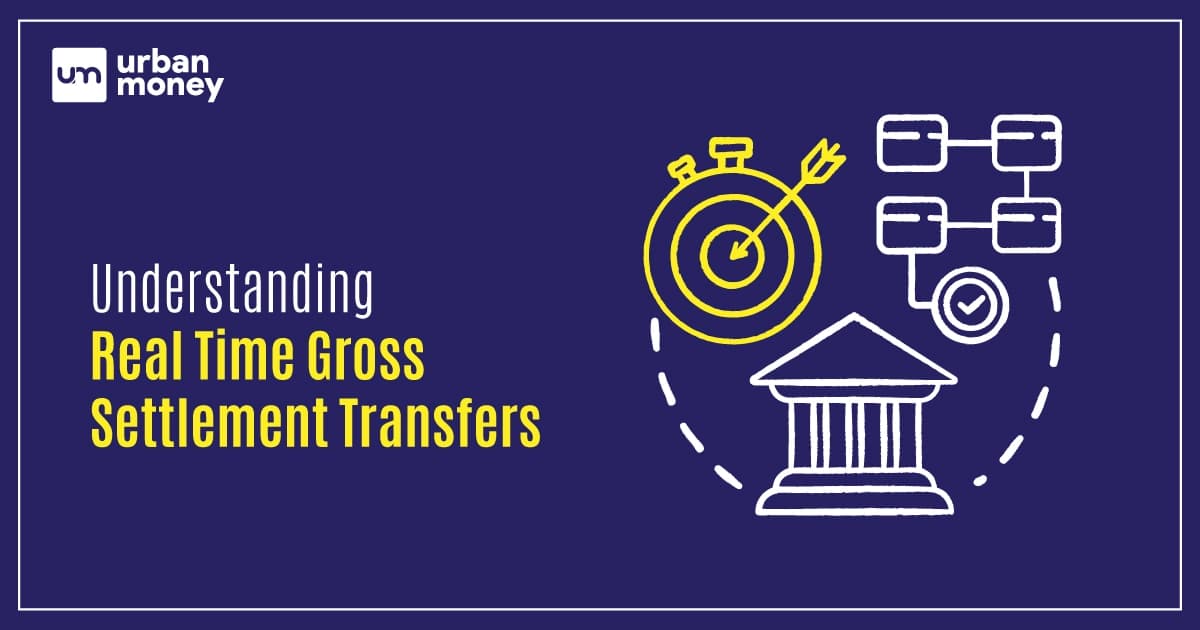RTGS Transfers - How to Perform RTGS Online and Offline

- Personalized solutions
- Expert guidance
- Application assistance
- Credit score discussion
- Interest rate comparison


Last Updated: 21 December 2025
Real-Time Gross Settlement (RTGS) is a payment mechanism that enables quick transfers of funds between two participating banks. It is used to make business-to-business payments, large-value transactions, and government payments easier. When compared to other payment options, RTGS transfers are faster and more secure. It also decreases the danger of fraud because of the rapid transfer of funds and the confirmation process. RTGS transactions are resolved via a centralised system that permits transfers to occur independent of the availability of the other banks involved in the transaction. The funds are promptly debited from the sender’s bank account and credited to the receiver’s account when a transfer is initiated. Typically, funds are available to the receiving party within a few minutes.
Conducting RTGS Transfers Online
The Reserve Bank of India has made the RTGS process fairly easy to navigate. The user needs to follow the below-mentioned steps when making an RTGS transfer.
- Access your Internet banking account.
- Click on the ‘Fund transfer’ option available on the main page.
- Select ‘RTGS’ from the drop-down menu.
- To add a new beneficiary, go to the page and click the ‘Add beneficiary’ button. However, if the beneficiary is added, you can skip to step 8.
- Enter the beneficiary’s details, such as name, bank account number, IFSC, and so on.
- Click ‘Add’ or ‘Confirm’ and enter the OTP sent to the registered mobile number.
- In a few hours, the recipient will be added.
- Select the beneficiary from the list once the beneficiary has been added
- Enter the amount to be transferred and confirm the transaction.
- Click ‘Confirm’ and input your OTP and card number (if asked for).
- The money will be transferred.
Conducting RTGS Transfers Offline
Customers can request an RTGS transaction at their bank branch. They must follow the below-mentioned steps.
- Visit the nearest bank branch.
- A bank representative will provide the sender with a form for RTGS transactions.
- Fill out the RTGS transaction form with all the essential information, such as the beneficiary’s name, account number, and transfer amount.
Features and Benefits of RTGS Transactions
The RTGS systems are appreciated by users around the world. In India, however, the following features and benefits make the RTGS process unique.
- The minimum transaction amount should be Rs. 2 lakhs. However, there is no cap on the maximum amount.
- It is a safe and secure method of transferring payments.
- The system is available 24 hours a day, seven days a week. The monies are transferred to the beneficiary account in real-time.
- The remitter is not required to use a tangible cheque or demand draft.
- The beneficiary is not required to visit a bank office to deposit the paper instruments.
- The beneficiary does not need to be concerned about physical instrument loss or theft or the possibility of fraudulent encashment.
- If the bank provides such a service, the remitter can initiate the transfers from the comfort of their home or workplace.
- The RBI has eliminated transaction fees.
- The transaction is legally protected.
Estimated Time for RTGS Transfers
There are no RTGS limits except for the minimum amount requirement of Rs. 2 lakhs. As soon as the sender completes the RTGS process, the amount gets debited from the sender’s account and gets credited to the beneficiary’s account immediately. Thus explaining the name ‘real time’. The RTGS system takes less than 30 minutes to exchange the funds.
Key Considerations Before Initiating an RTGS Transfer
When it comes to money, you can be careful enough. The RTGS systems deal with heavy amounts, and any mistakes can result in great problems. Therefore, the following points must be taken into consideration by the sender before initiating the RTGS process.
- Before you may start making RTGS payments, you must first add the beneficiary to your account. You must supply the beneficiary’s name, bank account number, account type, bank name, and IFSC in order to do so.
- The RTGS minimum transfer amount is Rs. 2,00,000.
- There is no maximum amount that can be transmitted with RTGS.
- The RTGS service is available 24 hours a day, 365 days a year.
- To clearly identify each RTGS transaction, each transaction is assigned a UTR number, which is a 22-character-long code that is unique to each trade.
FAQ About RTGS Transfers
Are there any additional charges for RTGS transfers?
No, the Reserve Bank of India has removed the fees and charges associated with the RTGS transactions.
What should I do if there is an issue with my RTGS transfer?
You should contact your bank if you encounter any issues with the RTGS transfers.
Can I schedule an RTGS transfer for a future date?
No, future-dated transfers are not accepted by the RTGS system.
Are RTGS transfers secure?
Yes, RTGS transfers are secure. The quick transfers eliminate the chances of defaults. However, the sender must be careful when entering the amount and other required details.
Is there any limit on the amount that can be transferred using RTGS?
There are no RTGS limits on the maximum amount. However, a minimum of Rs. 2 lakhs can be transferred using the RTGS network.
What steps are involved in an RTGS Money Transfer Process with leading banks?
You must log in to your bank account via net banking and choose the ‘RTGS’ option under the ‘Fund transfer’ option. You must then enter the required details. Kindly read our blog to gain a deeper knowledge of the whole process.
Which is better: RTGS or NEFT?
The RTGS system instantly transfers amounts above Rs. 2 lakhs, whereas the NEFT system takes some time to transfer funds. However, any amount can be shared under NEFT as opposed to RTGS transfers.
